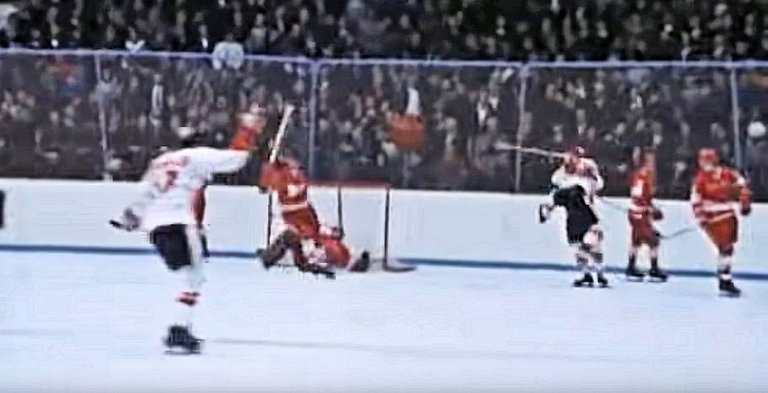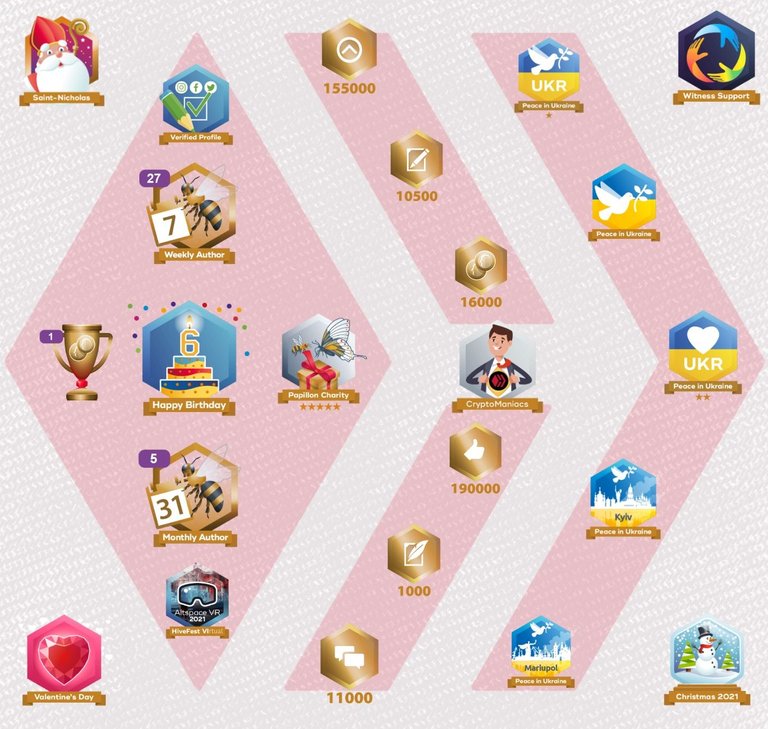The 1972 Greatest Goal of All Time

On September 28, 1972 in the final game of the Canada vs Russia Summit series, Paul Henderson scored the winning goal giving Canada the win of the game and the series. His goal has become the most famous in Canadian history.
Recently the remaining members of Team Canada were welcome into the House of Commons where politicians of all parties paid tribute to them.
In my younger days I was a huge fan of hockey. I watched the games. Read up on the players. Knew who played on what team. In those days the National Hockey League (NHL) had twelve teams. Some of the teams were played in American cities but the majority of the players were Canadians.
In 1972 of the top 50 players in the league, 48 were Canadians.
Why Was the Series A Big Deal?
While Canada didn’t invent ice hockey, our long winters enabled the game to take hold in this country. Hockey historians credit the United Kingdom for the origins of the game but their winters didn’t allow for organizing leagues to play with any certainty.
Hockey has become part of our national DNA since the 19th century. The National Hockey League’s 150 players were professionals and arguably the best in the world. Our amateur players were able to take on and beat international teams on a regular basis.
Then 1954 happened. The Soviets appeared on the scene with a team they had been six years assembling and training. The wiped the ice with the Canadians. It was taken as a national affront. The Soviets went on to dominating the World Hockey Championships.
Their team was made up of players from the army who played hockey full time. International competitions allowed only amateurs to play. They kept their amateur status as they were not paid to play hockey, they were paid as soldiers.
In 1969 the Canadian national team lost the eleven games they played against the Soviets. The crushing of our national pride was becoming unbearable. Canadian fans were convinced putting our professional players up against the best the Soviets had to offer would be a rout.
The 1972 Summit Series
At a political level, Russia was a closed space. The Cold War was on and the Iron Curtain was firmly in place. Traveling in and out of Russia was not easily done. The Soviets wanted a chance at the best Canada had to offer on the ice. The door cracked open when Alan Eagleson from the NHL Players’ Association approached with an offer.
Negotiations got underway in 1969 and would take until 1972 to reach an agreement. The Summit Series as it would be called was to be four games in Canada and four in the Soviet Union starting September 2nd.
Thirty-five of the best in the NHL were selected. Superstar player Bobby Hull had signed with the World Hockey Association and was not eligible to play. Bobby Orr’s participation was uncertain as he dealt with chronic knee problems.
Fans and media in Canada expected the series to be a one-sided romp. A group of Canadian scouts spent four days in Russia observing the team in August. What they saw was in their view a team of outclassed amateurs. They saw their goalie Vladislav Tretiak as their weakest link.
Instead of working on defense, the Canadians believed they were going to beat the Soviets by scoring goals. They had not doubt they would, they just weren’t sure how many. Legendary goaltender Jacques Plante felt sorry for Tretiak. He visited the Soviet dressing room to brief him on how Canadian players tended to shoot.
The Canadian Games
The first game was played in the Montreal Forum on a hot humid evening. The Canadian team were pumped and confident. Just 30 seconds in Phil Esposito scored followed by Paul Henderson at 6:32. It looked like the expected rout was well underway.
The Soviets quickly shook off any jitters and let their strength and training take over. By the end of the first period, the game was tied 2-2. The game was competitive. Dreams of the rout quickly faded and hard work took over. Canada lost the first game 7-3.
By the time they arrived in Toronto two nights later, the lineup had been revamped and the focus was on a stronger defense. A spectacular third period goal at 6:47 by Pete Mahovlich put the Canadians up 3-1 just 54 seconds after the Soviets had scored. The game ended Canada winning 4-1.
The Canadian team was amped, they saw this series as bigger and more exciting than the Stanley Cup. The Soviets proved to be formidable players who adapted quickly to the professional play of the Canadians. Tretiak was every bit the skilled goalie that Ken Dryden was for the Canadians.
The games were exciting to watch. It was solid end to end hockey rarely marred by penalties. I watched every game.
Game three went well until period two when Canadians 4-2 lead slipped away in Winnipeg on September 6th. The game ended in a 4-4 tie and fans across the country disappointed, even angry.
Game four on September 8th in Vancouver went from bad to worse. Multiple changes to the lineup resulted in poor discipline and a lack of teamwork. Their 5-3 loss was met with boos at the Canadian Team.
Yes, Canadian fans can be fickle. Unless you are a Maple Leafs supporter, then you live in hope.
Exhibition Games in Sweden
The Candian team flew to Stockholm on September 12th. The two exhibition games against the Swedish national team gave them an opportunity to get used to the wider ice surface in use in Europe.
The two teams battled to a 4-1 victory for Canada and a 4-4 tie. The Canadian team can out of it with more cohesiveness than they went in.
The Moscow Series
About 3,000 Canadians travelled to the Soviet Union to support the team. The series had taken on political tones of a battle between democracy vs communism and freedom vs oppression as much as it was about playing hockey.
Game five saw the lineup of Bobby Clarke, Paul Henderson and Ron Ellis give the Canadians a early lead. By the third period they were leading 4-1 until the Soviets exploded with four fast goals taking the game 5-4.
For the Canadians it was now do or die. They needed to win the next 3 games to take this series. The pressure was on.
Game six was hard fought but the Canadians managed a 3-2 victory. Paul Henderson scored the game winning goal. Game 7 continued the struggle with Phil Esposito scoring twice. An incredible goal by Henderson with 2:06 remaining in the game gave Canada a 5-4 win.
The series was tied. Game eight was going to decide the series. Questions about the officiating and bias toward the Soviets had arose. The Soviets insisted on an East German referee raised eyebrows. Questionable penalities to the Canadians gave the Soviets three power-play goals.
Life as we knew it pretty much came to a halt the day of the game. At schools, like mine, teachers bought TVs into classrooms. No one was doing school work or much of any work.
By the end of the second period, the Soviets were ahead 5-3. It was looking grim for the Canadians. The final period would prove to be the wildest yet.
At 2:27 into the period Esposito scored. He later had to fight off two defenders to get a shot away that Tretiak stopped. Yvan Cournoyer knocked in the rebound at 12:56 but the red goal light didn’t go on for the tying goal.
Off the ice an angry Alan Eagleson headed to the ice level. He was grabbed by Russian soldiers who tried to drag him toward the exit only to find several Canadian players led by Pete Mahovlich coming to his rescue swinging sticks and wrestling Eagleson away from the soldiers. The led him to the Team Canada bench. The goal was allowed.
A few minutes later, with it appearing the series would end in a tie, the Soviets declared they had won the series as they had scored more overall goals. The Canadians were not finished.
Let’s quote the words of the legendary hockey reporter Foster Hewitt for the final play:
“Henderson made a wild stab for it and fell.” He slid into the end boards but scrambled back in front as Esposito fired the puck at Tretiak. “Here’s another shot! Right in front…. They score! Henderson has scored for Canada!”
The historical goal:
Cheers and pride erupted across the country. I can remember the mayhem just in the classroom I was in. Canada had triumphed against the odds and against the attempt of an authoritarian governments effort to cook the game.
The win was redemption for the Canadian players and national pride.
The win also opened up space in the Northern American hockey world for European players. The NHL in particular had gained a new respect for European play and training methods.
Fifty years later, the country has not forgotten the history making Summit Series of 1972.
NOTE: Header image is a screen shot from the video.
Shadowspub is a writer from Ontario, Canada. She writes on a variety of subjects as she pursues her passion for learning. She also writes on other platforms and enjoys creating books you use like journals, notebooks, coloring books etc.
NOTE: unless otherwise stated, all images are the author’s

Would you like to receive writing prompts regularly?
You can subscribe to Prompt A Day to get started.
Share your posts
- join us on the DreemPort Discord for PYPT
- Join DreemPort and take part by following @dreemport . Get eyes on your content and meet new friends.

https://twitter.com/ShadowsPub/status/1575235704476430336
The rewards earned on this comment will go directly to the people( @shadowspub ) sharing the post on Twitter as long as they are registered with @poshtoken. Sign up at https://hiveposh.com.
A piece of sporting Cold War history I did not know. Thanks for writing this up.
I enjoy sharing history .. so it's always nice when people enjoy learning it.
I was just a baby but I have seen the goal hundreds of times over the years. I didn't know the history of the whole battle though so thanks for the info.
it was pretty cool being there when it happened. Even more so that we got a sanctioned class cutting to watch it.